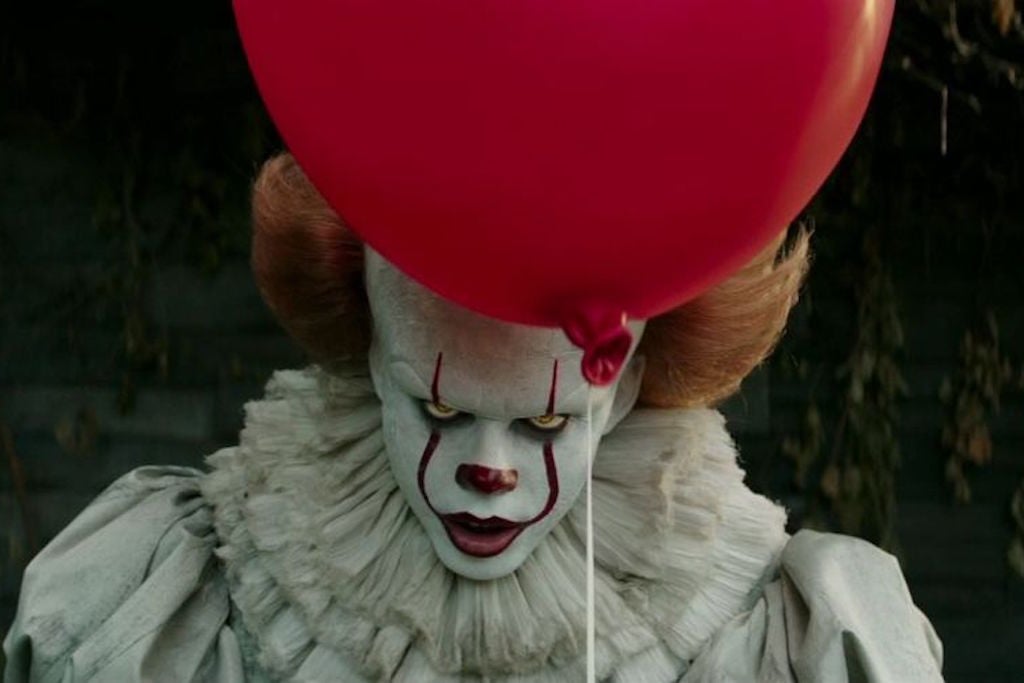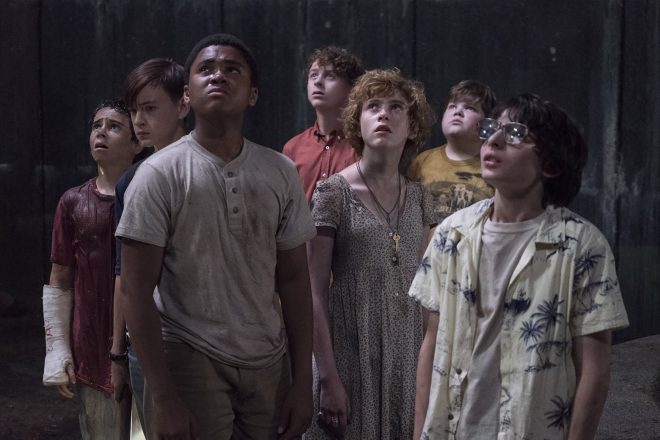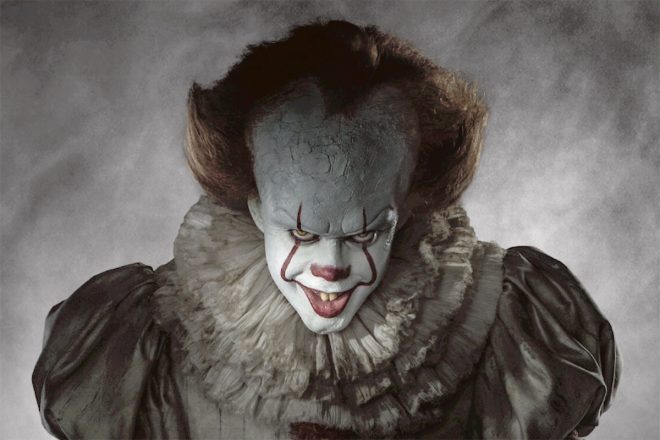Yep, ‘It’ Is Terrifying, But Not Just Because Of The Clown
Is It scary? It’s more than that.

There’s never going to be a version of It as terrifying as the novel I read when I was 12.
I vividly remember hunching over the second-hand book’s dog-eared pages. Its cover was a black expanse with a yawning storm drain in the centre, illuminated by a pair of malevolent eyes. Of the book’s two narratives, I couldn’t quite relate to the adults’ storyline of architecture and unhappy marriages. The Losers’ Club, though… they struck a nerve. Bill, Beverly, Mike, Ben, Eddie, Richie and poor Stanley.

I saw something of myself in them. I saw the streets of the town I grew up through the streets of Derry; the streets haunted and terrorised by It, an elemental force that manifested itself as decaying hobos and fearsome werewolves and worst of all, the sinister Pennywise the Dancing Clown.
King’s novel petrified me not just because of its vividly-realised encounters with It, but with the insidious sense that It wasn’t just a monster that lived in the sewer. It was the neglect and abuse of this small town, the evil inclinations festering under the bland faces of the adults you’d begun to distrust.
For me, It wasn’t synonymous with Tim Curry’s (admittedly iconic) performance as Pennywise in the 1990 TV miniseries. It evoked for me the babysitter I’d had as a child who went on to become a prison guard who staged a violent jailbreak (they made a TV movie about that too), or the creepy Year 7 teacher who’d later go on to get a student pregnant. It has left an indelible impact on pop culture — you only need look at the collective anticipation greeting Andy Muschietti’s new film — but it’s more than red balloons and creepy clowns. At its core, It channels the dreadful childhood realisation that the world’s not as safe as you thought it was.
Muschietti’s take on It was never going to be as terrifying as the novel I read when I was 12. But is it scary?

Short answer: yes.
That’s probably the wrong question to ask. Did I find it scary? Sure. Not as much as my wife — who has an acute fear of clowns and spent the majority of the film coiled up in terror. Fear is subjective. One critic finds the film “scary as shit”, another complains that “it’s just not scary”. One review praises the film for “favouring atmosphere over jump scares”; another observes that It “features a truly staggering number of jump scares”,
A more interesting question is how does the film scare — or try to scare — its audience? And what are those fears grounded in, beyond bumps in the night and shapes in the dark?
Mechanically, Muschetti adheres to the conventional grammar of modern horror movies. Particularly in the early scenes — as the losers encounter It one-by-one — the Argentine director makes liberal use of Dutch angles, an ominous score, jump scares paired with LOUD! NOISES! and uncanny visual effects (much like the warped, eponymous monster of Mama, his previous film). The escalating sense of terror — a similar kind to Annabelle Creation — is tempered by the need to interrupt these sequences with an actual, y’know, plot. The Losers must first become friends and begin to investigate the real nature of Pennywise together.
The cruel adults aren’t It, but their neglect represents everything It stands for.
That storyline might detract from the lizard-brain potency that ‘purer’ horror films can muster, but it’s critical to the film’s development of a deeper kind of terror so important to King’s novel (that the Tim Curry miniseries never really understood). The fears that haunted house horror like Annabelle Creation channel are primal, but simple — the childhood notion that that unfamiliar noise outside your bedroom is the bogeyman coming to get you. For It to really work, it needs to progress past that fear into something scarier: the realisation that the creaks of the floorboards aren’t the bogeyman, but something more monstrous beneath the strictures of polite society.
The scariest moment in this version of It, the moment that really taps into the core of King’s novel, is a small one. Ben Hanscom (Jeremy Ray Taylor), facing the wrath of local, switchblade-wielding bully Henry Bowers (Aussie actor Nicholas Hamilton), calls for help from a passing car. The adults turn, recognise his plight, and keep on driving. As the car recedes into the distance, a single red balloon bobs up in their rear window. Those bystanders aren’t It, but their neglect represents everything It stands for.
Muschetti’s adaptation isn’t perfect. The visual effects occasionally stray into clumsy or cartoonish and the dialogue — from screenwriters Gary Dauberman, Chase Palmer and True Detective’s Cary Fukunaga, originally slated to direct — occasionally strays into clunkiness.
I agree with most of the changes made from the novel. Centring this film entirely on the teenaged Losers and saving the adult storyline for the inevitable Chapter 2 is a smart choice, as is the decision to shift the setting forward from the ‘50s to the late ‘80s. That change in setting allows for some cute jokes about New Kids on the Block and Molly Ringwald (the film’s funnier than you might expect), but I don’t buy the argument that it’s capitalising on Stranger Things popularity or demonstrating the same pandering nostalgia. (That causality is backwards, anyway. Stranger Things is heavily indebted to King.) Still, some choices are frustrating. Passing Mike’s role as Derry historian to Ben leaves Mike feeling like the ‘token black kid’ common in ‘80s cinema, for one.
That said, an imperfect, lumpy adaptation feels fitting for an imperfect, lumpy book. King’s novel has flashes of greatness amongst quite a bit overwrought indulgence (and an infamous pre-teen sex scene, delicately excised here). There’s an obvious fondness for King’s novel evident here. Easter eggs include references to a turtle, a Paul Bunyan statue looming in the background, and… actual Easter eggs. But the most clear evidence of that is in how effectively the film induces the stomach-churning subtext of the book.
It may not be as terrifying as the novel I read when I was 12. But the film transported some part of me to that liminal space between childhood and adolescence, a space of freedom and powerlessness and fear. Is It scary? It’s more than that.
–
It is in cinemas now.
–
Dave Crewe is a Brisbane-based teacher and freelance film critic who spends way too much of his time watching movies. Read his stuff at ccpopculture or pester him at @dacrewe.